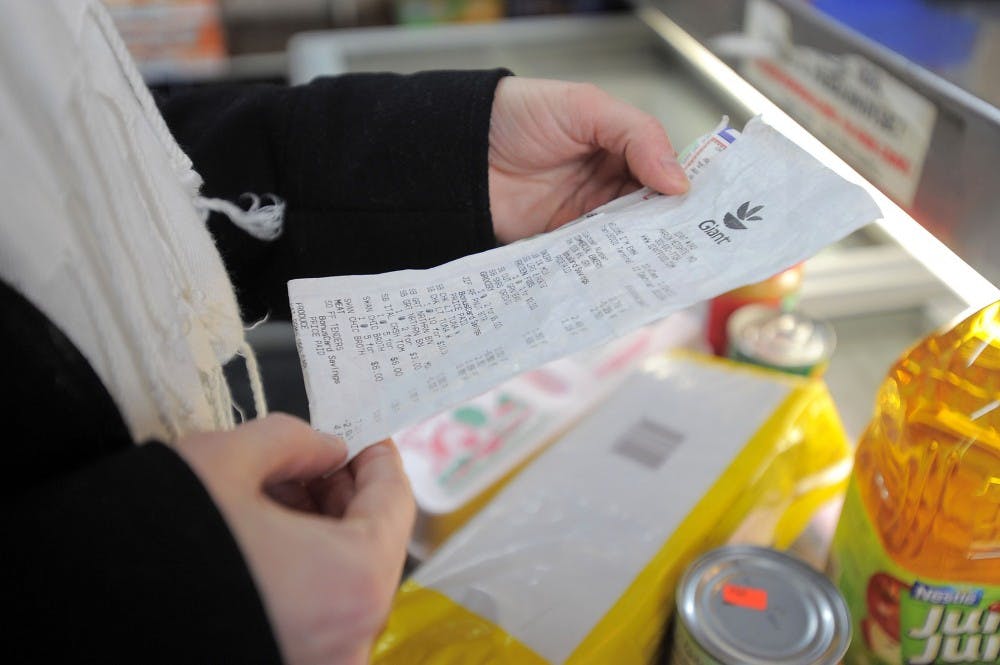SNAP BENEFITS
892,699 Hoosiers participated on average in SNAP per month in 2014
$125.37 average benefit per person in 2014 in the United States
$1.3 billion benefits in Indiana in 2014
Source: USDA
Being a Ball State student will be what is keeping one mother and her children fed if a new proposal becomes law.
Ayat Rasheed, senior communications major and single mother of two, has been a part of the Supplemental Nutrition Assistance Program for about five months. The program, previously known as food stamps, provides assistance for families to buy food and other necessities.
“[Before SNAP ] We sometimes went hungry. It was tough, especially with kids. It made it so hard,” Rasheed said. “It would be really hard if my assistance was taken away. I’m still learning the language [English] and the culture. I have a job. I make $7 an hour, and it’s not very much but it’s worth it. But it’s not enough for food.”
Beginning in March 2015, Indiana plans to reinstate Federal Time Limits which will limit SNAP benefits for able-bodied, childless Hoosiers who do not work or attend job training programs at least 20 hours per week, according to a letter the state wrote to the U.S. Department of Agriculture.
Students, including Rasheed, will be exempt from the limits.
Assistance will be limited to three months over a three year period. This is known as work requirements, or time-limited benefits. The time limits were set up originally by Congress in 1996 and were suspended during the recession of 2008, according to usda.gov.
Trevor Callahan, 28, of Richmond, Indiana would lose his benefits in March.
“I know it would make my life extremely difficult,” Callahan said. “I wouldn’t be able to do the best thing for my future because I would be concerned way too much on the present. I wouldn’t be able to get the help that I feel like I need.”
Callahan, an Ivy Tech graduate, is currently unemployed.
The U.S. Department of Agriculture has given 37 states the ability to waive time limits for 2015. Indiana is among many states that could avoid the reduction of benefits by enacting the waiver, but opted to reinforce the limits.
"We view the re-establishment of the ... time-limited benefits in Indiana as an opportunity to help improve the skills of our fellow Hoosiers and advance their prospects for meaningful employment, while at the same time establishing a pool of better-prepared candidates for the Indiana workforce," Lance Rhodes, director of the division of family resources for the Indiana Family and Social Services Administration, wrote in a letter to the U.S. Department of Agriculture.
The bill, in theory, should work to benefit the economy, said Lee Spector, Ball State economics professor.
"It's not a bad idea if you have a way to get a job. If everyone were to get a full time job that is looking for a job, [the bill] would boost the economy. On the surface, it's a good idea," Spector said.
Re-establishing the bill is meant to incentivize those on SNAP to seek meaningful employment, said Ed Bolen, the senior policy analyst at the Center of Budget and Policy Priorities. Bolen said this is ineffective.
“It’s odd to hear the time limit described as trying to encourage people to work," Bolen said. "Well if you end up cutting all of those people of SNAP and they lose $150 of food assistance, for some of those people, that’s going to be very traumatic. They’ll have to skimp on rent, and sell their car which means they can’t even get to work. That’s the problem."
The time limits could potentially affect all childless Hoosiers who are unable to find work within three months. Michael Hicks, director of the Economics and Business Research Center at Ball State disagrees with the benefits program entirely.
“We have this patchwork of a program that doesn’t really do anything for poor people but make them stand in line in a dozen different places and make them fill out forms," Hicks said.
Callahan, who is childless and unemployed, also disagrees with the SNAP system as it currently stands.
“I don’t think it should be a safety net just for people who fail,” said Callahan, “How am I supposed to focus on my career when I’m essentially forced to get a menial job because I need to feed myself?”





